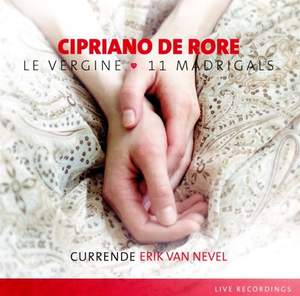The poetry of Francesco Petrarca has inspired many composers over the centuries. His sonnets and stanzas are highly musical in effect and appeal directly to the imagination. Petrarch’s muse Laura was his continual and lifelong source of inspiration; his unrequited love for her throughout his life resulted in an ecstasy that reverberates throughout his literary works.
It is therefore highly unusual that this courtly love should undergo such a metamorphosis after Laura’s death; in his final poems he identifies her with the virgin Mary. What had been profane ecstasy is now ennobled and idealised into ritual deification. Petrarch praises ‘his’ virgin in many and varied ways; each stanza begins with the word Vergine, uttered prayerfully, as a murmur, in ecstasy, or as invocation, following this with various superlatives.
It was in 1548 that Cipriano de Rore decided to set the complete cycle of eleven poems to music, having already provided musical settings of their initial verses. He was one of the first to compose such a collection as an individual work, with a passion for the words and the language that was at that time completely new; through this he also laid the foundations for a further intensification of the relationship between words and music that was eventually to result in the development of the seconda prattica in Italy at the beginning of the following century. De Rore’s role in the development of musical style and practice in general at that time was important in every respect.
De Rore’s compositions have always fascinated us; the complete series of Vergine have long appealed to our imagination and we have naturally also long been enraptured by Petrarch’s poetry. Given that we made the decision to perform this cycle in its entirety some years ago, we have been able to take time to prepare our approach to these madrigals. We are particularly pleased that we were able to realise this project as part of the De Rore Festival that was held in Ronse in Belgium in



